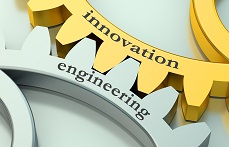 Globalization is redefining the face of commercial enterprise, the roles of developing countries, and the power of individuals. Changing business practices and technological capabilities have had lasting effects on the future competitiveness of both established and emerging economies.
Globalization is redefining the face of commercial enterprise, the roles of developing countries, and the power of individuals. Changing business practices and technological capabilities have had lasting effects on the future competitiveness of both established and emerging economies.
With financial support from the Kauffman Foundation, the Duke GVC Center engaged in research on engineering and entrepreneurship between 2006 and 2010. The research projects dealt with the state of engineering education competitiveness in the United States, the phenomenon of immigrant entrepreneurship, and sources of innovation and workforce development in varied overseas locations, such as India and China.
A narrow band of firms in China and India in particular are utilizing top talent to explore high-value research and development, and design work rather than low-skilled outsourcing activities. As these trends evolve, the United States, which is known as a fertile startup environment with strong contributions from skilled immigrants, may have difficulty retaining and attracting future generations of immigrant entrepreneurs due to current visa policies. To understand and explore these issues, the Global Engineering and Entrepreneurship (GEE) research group conducted studies on a range of topics, including:
The Global Engineering and Entrepreneurship @ Duke research group consisted of an interdisciplinary team of engineers, sociologists, and industry experts. Many of the individuals involved in this research have interests in corporate management, global economics and intellectual property.
This paper examines what motivates individuals from different parts of the world to come to the United States. It was published in The Asia-Pacific Journal (2009), Vol. 7, Issue 14, No. 1.
This paper attempts to answer questions on immigration and entrepreneurship through a survey of 1,203 Indian and Chinese immigrants who had worked or received their education in the United States and returned to their home country. It was the fourth paper in the series on America’s New Immigrant Entrepreneurs.
This paper is based on detailed interviews with the CEOs, HR executives, R&D managers, and employees of 24 leading companies in rapidly growing sectors in India. The authors present an overview of best practices.
Multinational pharmaceutical corporations are searching for means to broaden their capacity for drug development while decreasing costs. Pharmaceutical firms in India and China are increasingly forging partnerships with these corporations to gain revenue and to develop their own expertise. These relationships largely appear to be symbiotic. As a result of the movement of research to their countries, Indian and Chinese scientists are rapidly developing the ability to innovate and create their own intellectual property. Several firms in India and China are performing advanced R&D and are moving into the highest-value segments of the pharmaceutical global value chain. This research was funded in part by the Ewing Marion Kauffman Foundation.
This paper explores the educational attainment and career trajectories of immigrant entrepreneurs in the United States. It was published in Applied Research in Economic Development (2008), Vol. 5, No. 1, pp. 6-14.
This article challenges the commonly cited statistics for engineering graduates in the United States, China, and India. The authors argue that the key issue in engineering education should be the quality of graduates, not just the quantity. It was published in the Journal of Engineering Education (2008), Vol. 97, No. 1, pp. 13-25.
In today’s knowledge-based economy, capturing value from intellectual capital and knowledge-based assets has gained importance. Global competition is no longer for the control of raw materials, but for this productive knowledge.
This paper is the third in a series of studies focusing on immigrants’ contributions to the competitiveness of the U.S. economy. Earlier research revealed a dramatic increase in the contributions of foreign nationals to U.S. intellectual property over an eight-year period. In this paper, we offer a more refined measure of this change and seek to explain this increase with an analysis of the immigrant-visa backlog for skilled workers. The key finding from this research is that the number of skilled workers waiting for visas is significantly larger than the number that can be admitted to the United States. This imbalance creates the potential for a sizeable reverse brain-drain from the United States to the skilled workers’ home countries. This research was supported by the Kauffman Foundation.
Skilled immigrants have achieved great success in starting engineering and technology companies in the United States, and they contribute significantly to the country’s economic growth over time. This paper seeks to understand the educational backgrounds and career trajectories of immigrant entrepreneurs, as well as to identify lessons for enhancing the competitiveness of the U.S. economy. The research confirms that advanced education in science, technology, engineering, and mathematics is correlated with high rates of entrepreneurship and innovation. This was the second paper in the series on America’s New Immigrant Entrepreneurs. The research was funded in part by the Ewing Marion Kauffman Foundation.
Researchers from Duke University studied the impact of globalization on the engineering profession. This included comparing engineering education in the United States with its major new competitors, India and China; identifying the sources of U.S. global advantages; exploring the factors driving the U.S. trend toward outsourcing; and learning what the US can do to keep its economic edge. The data obtained and analysis provided can help U.S. policymakers, business leaders, and educators chart future actions. This article was published in the National Academy of Science Journal, Issues in Science & Technology, Spring (2007), p. 73-84.